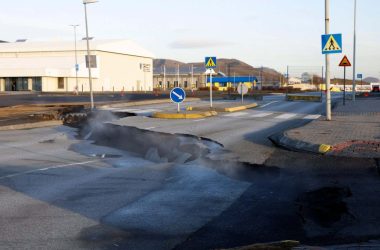Veins of white quartz on the north-east coast of the US
Richard Berube / Alamy Stock Photo
Geological processes like earthquakes may have catalyzed oxygen-generating reactions that significantly influenced the evolution of Earth’s earliest life forms.
Today, oxygen constitutes about a fifth of Earth’s atmosphere, primarily produced by plants and microbes. However, in the planet’s early years, the oxygen content was minimal until it soared during the Great Oxidation Event between 2.4 and 2.3 billion years ago, largely due to the proliferation of oxygen-releasing, photosynthesizing microbes.
The ubiquitous presence of antioxidant enzymes across the biological spectrum suggests that a common ancestor that existed before the Great Oxidation Event was exposed to some oxygen.
Mark Thiemens and his team at the University of California, San Diego, conducted an experiment by grinding up quartz rock and subjecting it to water under chemical conditions reminiscent of Earth’s pre-oxygenated state. Quartz was chosen for its simplicity and abundance as a silicate mineral.
Their research revealed that fractured crystals on quartz surfaces could interact with water to produce molecular oxygen and other reactive oxygen species like hydrogen peroxide. These free radicals, which can cause DNA and cellular damage, were likely pivotal to early evolution, according to Timothy Lyons from the University of California, Riverside, who was not involved in the study.
“Life developed the enzymatic ability to counteract the harmful effects of these species very early on,” he states.
In natural settings, earthquakes, erosion, or glacial movements could cause similar abrasions on quartz and other silicate minerals. This could lead to interactions with water, producing the same oxygen molecules. The researchers estimated that seismic activities alone could have produced 100 billion times more hydrogen peroxide than atmospheric reactions, another potential source of non-biological oxygen.
Adaptations to this geologically sourced oxygen might have allowed some organisms to endure the radical chemical transition during the Great Oxidation Event, Lyons suggests.
The team further posits that similar geological processes on other celestial bodies, such as Martian sandstorms or tidal changes on Saturn’s moon Enceladus, could also generate oxygen, an essential element for life detection on those planets.












